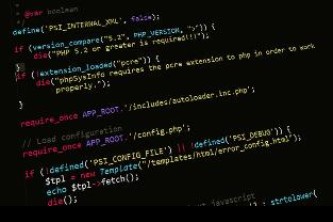JavaScript字符串转JSON的全面指南:从基础到高级应用
在JavaScript开发中,将字符串转换为JSON(JavaScript Object Notation)是一项常见且重要的操作,JSON作为一种轻量级的数据交换格式,广泛应用于前后端数据交互、配置文件处理等场景,本文将详细介绍JavaScript中字符串转JSON的各种方法、注意事项以及实际应用场景。
基础方法:JSON.parse()
JavaScript内置的JSON.parse()方法是字符串转JSON最直接、最常用的方式,该方法可以将符合JSON格式的字符串解析为JavaScript对象或数组。
基本语法
JSON.parse(text[, reviver])
text: 要被解析的JSON格式字符串reviver: 可选参数,一个转换函数,会在每个键值对上调用
示例代码
// 简单对象字符串转JSON
const jsonString = '{"name": "张三", "age": 30, "city": "北京"}';
const jsonObj = JSON.parse(jsonString);
console.log(jsonObj.name); // 输出: 张三
// 数组字符串转JSON
const jsonArrayString = '[1, 2, 3, "a", "b"]';
const jsonArray = JSON.parse(jsonArrayString);
console.log(jsonArray[2]); // 输出: 3
// 嵌套对象
const nestedJsonString = '{"user": {"name": "李四", "contact": {"email": "lisi@example.com"}}}';
const nestedJson = JSON.parse(nestedJsonString);
console.log(nestedJson.user.contact.email); // 输出: lisi@example.com
使用reviver函数
const dateString = '{"name": "王五", "birthDate": "1990-01-01"}';
const jsonWithDate = JSON.parse(dateString, (key, value) => {
if (key === "birthDate") {
return new Date(value);
}
return value;
});
console.log(jsonWithDate.birthDate instanceof Date); // 输出: true
常见错误及处理
语法错误
当字符串不符合JSON格式时,JSON.parse()会抛出SyntaxError。
const invalidJson = "{name: '张三', age: 30}"; // 属性名必须使用双引号
try {
JSON.parse(invalidJson);
} catch (error) {
console.error("JSON解析错误:", error.message); // 输出: Unexpected token n in JSON
}
安全问题
直接解析来自不可信源的JSON字符串可能导致安全风险(如原型污染攻击),建议在使用前验证字符串来源。
function safeParse(jsonString) {
try {
return JSON.parse(jsonString);
} catch (error) {
console.error("无效的JSON数据");
return null;
}
}
// 使用示例
const userInput = '{"__proto__": {"isAdmin": true}}';
const parsed = safeParse(userInput);
console.log(parsed.isAdmin); // 正常情况下应为undefined,但实际可能受原型污染影响
高级技巧与替代方案
处理单引号字符串
虽然JSON标准要求使用双引号,但有时会遇到使用单引号的字符串,可以使用replace()方法转换:
const singleQuoteString = "{'name': '赵六', 'age': 25}";
const validJsonString = singleQuoteString.replace(/'/g, '"');
const parsed = JSON.parse(validJsonString);
console.log(parsed.name); // 输出: 赵六
使用JSON5库处理非标准JSON
对于非标准JSON(如允许单引号、尾随逗号等),可以使用JSON5库:
// 首先安装JSON5: npm install json5
import JSON5 from 'json5';
const nonStandardJson = "{name: '钱七', age: 35,}"; // 允许单引号和尾随逗号
const parsed = JSON5.parse(nonStandardJson);
console.log(parsed.name); // 输出: 钱七
使用eval()(不推荐)
虽然eval()可以执行JavaScript代码并返回结果,包括解析对象字符串,但存在严重的安全风险,应避免使用:
// 危险!不要在实际项目中使用
const jsString = "{name: '孙八', age: 40}";
const parsed = eval(`(${jsString})`);
console.log(parsed.name); // 输出: 孙八
实际应用场景
API响应处理
// 模拟从API获取的JSON字符串
const apiResponse = '{"status": "success", "data": {"users": [{"id": 1, "name": "用户1"}, {"id": 2, "name": "用户2"}]}}';
try {
const response = JSON.parse(apiResponse);
if (response.status === "success") {
response.data.users.forEach(user => {
console.log(`用户ID: ${user.id}, 姓名: ${user.name}`);
});
}
} catch (error) {
console.error("API响应解析失败:", error);
}
配置文件解析
// config.json内容示例
// {
// "app": {
// "name": "我的应用",
// "version": "1.0.0",
// "debug": true
// },
// "database": {
// "host": "localhost",
// "port": 5432,
// "credentials": {
// "user": "admin",
// "password": "secret"
// }
// }
// }
// 读取配置文件并解析
const fs = require('fs');
try {
const configJson = fs.readFileSync('config.json', 'utf8');
const config = JSON.parse(configJson);
console.log(`应用名称: ${config.app.name}, 版本: ${config.app.version}`);
} catch (error) {
console.error("配置文件读取或解析失败:", error);
}
前端数据存储与读取
// 将对象转换为JSON字符串存储到localStorage
const userData = { id: 123, preferences: { theme: 'dark', language: 'zh-CN' } };
localStorage.setItem('user', JSON.stringify(userData));
// 从localStorage读取并解析JSON字符串
const storedData = localStorage.getItem('user');
if (storedData) {
const parsedData = JSON.parse(storedData);
console.log(`用户主题偏好: ${parsedData.preferences.theme}`);
}
性能优化建议
- 避免频繁解析:如果多次使用相同的数据,考虑解析后缓存结果
- 使用流式解析:对于大型JSON文件,考虑使用流式解析库如
JSONStream - 验证JSON结构:在解析前可以使用模式验证库如
ajv验证JSON结构
// 使用ajv验证JSON结构示例
const Ajv = require('ajv');
const ajv = new Ajv();
const schema = {
type: "object",
properties: {
name: { type: "string" },
age: { type: "number", minimum: 0 }
},
required: ["name", "age"]
};
const validate = ajv.compile(schema);
const jsonStr = '{"name": "周九", "age": 28}';
const jsonObj = JSON.parse(jsonStr);
if (validate(jsonObj)) {
console.log("JSON数据有效");
} else {
console.log("JSON数据无效:", validate.errors);
}
在JavaScript中,将字符串转换为JSON主要通过JSON.parse()方法实现,这是最标准、最安全的方式,开发者需要注意:
- 确保字符串符合JSON格式(双引号、正确的语法)
- 处理可能的解析错误,使用try-catch块
- 对于非标准JSON,考虑使用专门的库如JSON5
- 避免使用不安全的方法如eval()
- 在实际应用中结合数据验证和错误处理机制
字符串转JSON的技巧对于JavaScript开发者来说至关重要,无论是处理API响应、解析配置文件还是管理本地存储,都离不开这一基础操作,希望本文的介绍能帮助你在开发中更加得心应手地处理JSON数据转换。








还没有评论,来说两句吧...